You are here:
- Home
- Anderson Mayfield, PhD
![]()
Anderson Mayfield, PhD
2013 Research Fellow
Bio
Anderson Mayfield has been interested in the marine environment since he was young, though before he was 18, the only time he ever got to see the ocean was during his week-long family vacations to the Florida panhandle. He didn’t begin to receive formal training in marine biology until he was a sophomore at Duke University, when he spent a semester split between the Duke Marine Lab in Beaufort, NC and the Bermuda Institute of Ocean Sciences. Next, he spent a semester at James Cook University, near Australia’s Great Barrier Reef, where he took courses in marine conservation biology and coral reef ecology. This experience led him to pursue graduate-level research in coral reef science, and he conducted his Master’s and Ph.D. research projects at the University of Hawaii, Manoa, specifically at the Hawaii Institute of Marine Biology, under the guidance of renowned coral biologist Dr. Ruth Gates.
After six wonderful years in Hawaii, Anderson moved to southern Taiwan to carry out a postdoctoral research project funded by the National Science Foundation at the National Museum of Marine Biology and Aquarium (NMMBA)with Dr. Chii-Shiarng Chen. Dr. Chen and Anderson have had such a productive academic relationship that he agreed to sponsor the laboratory portion of his Livings Oceans Foundation fellowship, allowing him to sample corals from various locales around the globe and process them at one of the world’s premier marine science institutes, NMMBA.
Missions
Photos
-

Here is a close-up photo of Seriatopora coral.
-
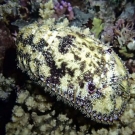
Sculptured slipper lobster (Parribacus antarcticus).
-
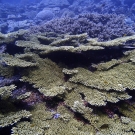
Beautiful reef in Marovo Lagoon.
-
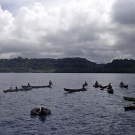
Dugout canoes lining up to get a closer look at the ship.
-
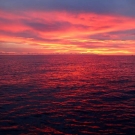
What a great way to end our day….a beautiful sunset in the Arnarvon Islands.
-
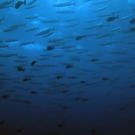
Barracuda school... right under the boat at Ulong Channel, Palau.
-
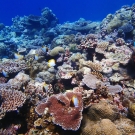
A vibrant, shallow-water coral reef in southern Palau.
-
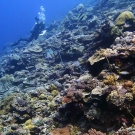
Grace Frank surveying a reef at Western barrier reef, Palau.
-
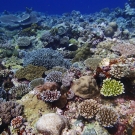
Shallow, leeward, barrier forereef dominated by acroporids and other scleractinians.
-
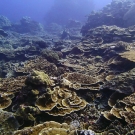
Peleliu, Palau: My favorite dive of the trip (as of Jan. 27, ~50 dives in).
-
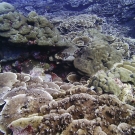
Merunlina sp. at Peleliu, Palau - amongst the most photogenic corals.
-
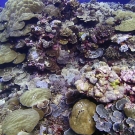
Peleliu, Palau: a coral lover's paradise.
-
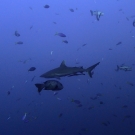
One of nearly 50 grey reef sharks seen at Palau's famous
-
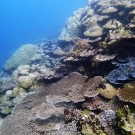
A hard coral-dominated community near Ulong Channel, Palau.
-
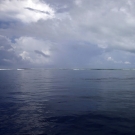
Channel near Crocodile Point, Palau.
-
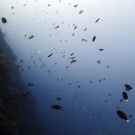
View from 30 m at
-
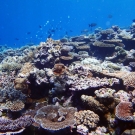
-
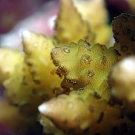
A close-up image of a common, Indo-Pacific reef-building coral Seriatopora aculeata; south of German Channel, Palau.
-
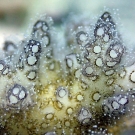
A macro lens photo of Pocillopora acuta, aclosely related sister species of the model coral for research Pocillopora damicornis, south of German Channel, Palau.
-
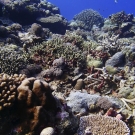
High coral diversity and cover in a shallow barrier forereef ecosystem at Peleliu, Palau.
-
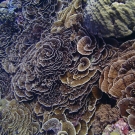
Beautiful Merulina sp. colonies at Peleliu
-
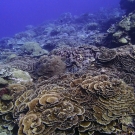
Merulina sp.-dominated meadow at 15 m at Peleliu, Palau.
-
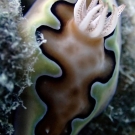
Nudibranch (~4-5 cm long) at Ngeruktabel, Palau.
-
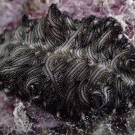
Magic carpet flatworm at Ngeruktabel, Palau.
-
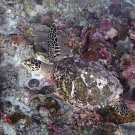
Hawksbill sea turtle at 20-25 m near
-
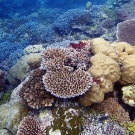
Pocillopora spp., Acropora spp., and Porites spp.-dominated reef at Western barrier reef, Palau (near Ulong).
-
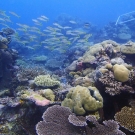
A lush reef, 8-12 m below the surface at the Western barrier reef of Palau.
-
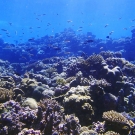
Looking up from 10 m in a high light environment at Desomel, Palau.
-
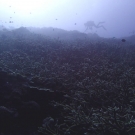
Looking up from 30 m at Olngenaol, Palau
-
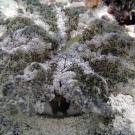
Cassiopia sp., the upside-down jellyfish at Rebotel Reef, Palau
-
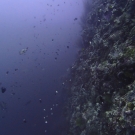
Palau's iconic
-
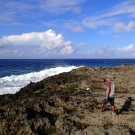
Bernard, an expert divemaster from Sam's Tours, at Anguar, Palau
-
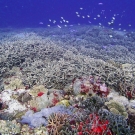
Branching acroporids carpeting the benthos at 20 m at Olngenaol, Palau
-
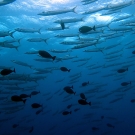
Schooling barracuda at 5 m in Ulong Channel, Palau
-
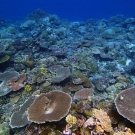
Palau's Western barrier reef
-
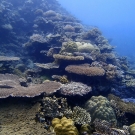
Tabular acroporids and massive poritids at Ulong Reef
-
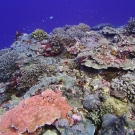
A high hard coral cover area in Peleliu, Palau
-
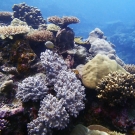
A mix of hard and soft corals on the western barrier forereef of Palau
-
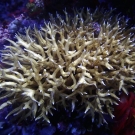
Seriatopora hystrix, the
Go to page:
Articles
-
2022
Published in Applied Sciences Abstract Numerous physical, chemical, and biological factors influence coral resilience in situ, yet current models aimed at forecasting coral health in response to climate change and other stressors tend to focus on temperature and coral abundance …
-
2022
Environmentally-Driven Variation in the Physiology of a New Caledonian Reef Coral
Published in Oceans Abstract Given the widespread threats to coral reefs, scientists have lost the opportunity to understand the basic biology of “pristine” corals whose physiologies have not been markedly perturbed by human activity. For instance, high temperature-induced bleaching has been …
-
2020
Are reef corals stressed or just pessimistic?
The Conversation December 14, 2018 By Anderson Mayfield Climate change threatens coral reefs around the globe. The high temperatures associated with this phenomenon can lead to “bleaching,” the breakdown of the symbiosis between corals and the algae that live within their cells. Since corals are nourished by these photosynthetically active algal …
-
2019
Modeling environmentally-mediated variation in reef coral physiology
Published in Journal of Sea Research, March 2019 By Anderson Mayfield, Alexandra Dempsey, and Chii-Shiarng Chen Abstract Increases in seawater temperature associated with global climate change are causing the mutualistic relationship between reef-building corals and the symbiotic dinoflagellates (genus Symbiodinium) …
-
2019
A statistical platform for evaluating coral health in an era of changing global climate
Published in Platax 15: 1-35, 2018 By Anderson Mayfield, Alexandra Dempsey, Javed Inamdar, and Chii-Shiarng Chen Abstract Given the significant threats against coral reef ecosystems, there is an urgent need to develop the capacity to make predictions as to which …
-
2018
The molecular ecophysiology of closely related pocilloporid corals of New Caledonia
The molecular ecophysiology of closely related pocilloporid corals of New Caledonia Mayfield et al. Platax 2017 By, Anderson B. Mayfield, Chii-Shiarng Chen, Alexandra C. Dempsey Abstract Given the severe threats against Earth’s coral reef ecosystems, there is an urgent need to collect …
-
2017
The molecular ecophysiology of closely related pocilloporids of the South Pacific: a case study from the Austral and Cook Islands Platax 13: 1-25, 2016 By Anderson B. Mayfield, Chii-Shiarng Chen, Alexandra C. Dempsey, Andrew W. Bruckner January 25, 2016 Abstract In …
-
2017
Biomarker profiling in reef corals of Tonga’s Ha’apai and Vava’u archipelagos
Biomarker profiling in reef corals of Tonga’s Ha’apai and Vava’u archipelagos PLoS ONE12(11): e0185857 By Anderson B. Mayfield, Chii-Shiarng Chen, Alexandra C. Dempsey November 1, 2017 Abstract Given the significant threats towards Earth’s coral reefs, there is an urgent need to document the …
-
2017
Identifying corals displaying aberrant behavior in Fiji’s Lau Archipelago
Identifying corals displaying aberrant behavior in Fiji’s Lau Archipelago PLoS ONE 12(5):e0177267 May 24, 2017 By Anderson B. Mayfield, Chii-Shiarng Chen, Alexandra C. Dempsey Abstract Given the numerous threats against Earth’s coral reefs, there is an urgent need to develop …
-
2015
This article, published by one of the Living Oceans Foundation Fellows, Andersen Mayfield, PhD, looks at how rubisco expression in the dinoflagellate Symbiodinium sp. is influenced by both photoperiod and endosymbiotic lifestyle. Rubisco Expression in the Dinoflagellate Symbiodinium sp. Is …
-
2015
Protein Analysis in Large Benthic Foraminifera
This article, published by one of the Living Oceans Foundation Fellows, Andersen Mayfield, PhD, looks at protein analysis in large benthic foraminifera. Protein Analysis in Large Benthic Foraminifera Approaches to Study Living Foraminifera, Environmental Science and Engineering December 11, 2013 …
-
2015
Compartment-specific transcriptomics in a reef-building coral exposed to elevated temperatures
This article, published by one of the Living Oceans Foundation Fellows, Andersen Mayfield, PhD, looks at compartment-specific transcriptonimics in a reef-building coral exposed to elevated temperatures. Compartment-specific transcriptomics in a reef-building coral exposed to elevated temperatures Molecular Ecology November 27, …
-
2015
This article, published by one of the Living Oceans Foundation Fellows, Andersen Mayfield, PhD, delivers insight acquired from aquarium studies in Southern Taiwan into the effects of temperature on gene expression in the Indo-Pacific reef-building coral Seriatopora hystrix. The effects …
-
2012
Temporal Variation in Nucleic Acid and Protein Ratios in Four Anthozoan-Dinoflagellate Endosymbioses of the Indo-Pacific: Implications for Molecular Diagnostics Given the threat of global climate change towards coral reefs and the endosymbiotic anthozoans that construct them, there is an urgent …
-
2012
The effects of a variable temperature regime on the physiology of the reef-building corals Seriatopora hystrix: results from a laboratory-based reciprocal transplant To understand the effects of global climate change on reef-building corals, a thorough investigation of their physiological mechanisms of …
-
2012
Reduced Expression of the Rate-Limiting Carbon Fixation Enzyme RuBisCO in the Benthic Foraminifer Baculogypsina sphaerulata holobiont in Response to Heat Shock Baculogypsina sphaerulata (Parker and Jones, 1860) is a common large benthic foraminifer (LBF) and is an important calcifier in coral …
-
2011
Diel rhythmicity of lipid-body formation in coral - Symbiodinium endosymbiosis
Diel rhythmicity of lipid-body formation in coral – Symbiodinium endosymbiosis The biogenesis of intracellular lipid bodies (LBs) is dependent upon the symbiotic status between host corals and their intracellular dinoflagellates (genus Symbiodinium ), though aside from this observation, little is known about LB behavior …
-
2011
Assessing the Impacts of Experimentally Elevated Temperature on the Biological Composition and Molecular Chaperone Reef Coral Gene Expression Due to the potential for increasing ocean temperatures to detrimentally impact reef-building corals, there is an urgent need to better understand not only …
-
2011
Lipid Bodies in Coral–Dinoflagellate Endosymbiosis: Proteomic and Ultrastructural Studies
Proteomics: Lipid Bodies in Coral–Dinoflagellate Endosymbiosis: Proteomic and Ultrastructural Studies Gastrodermal lipid bodies (LBs) are organelles involved in the regulation of the mutualistic endosymbiosis between reef-building corals and their dinoflagellate endosymbionts (genus Symbiodinium). As their molecular composition remains poorly defined, we herein …
-
2008
Traditional real-time quantitative polymerase chain reaction protocol cannot be used accurately with symbiotic organisms unless the relative contribution of each symbiotic compartment to the total nucleic acid pool is known. A modified ‘universal reference gene’ protocol was created for reef-building corals and sea …
-
2007
Osmoregulation in Anthozoan–Dinoflagellate Symbiosis
Osmoregulation in Anthozoan–Dinoflagellate Symbiosis Endosymbiosis creates a unique osmotic circumstance. Hosts are not only responsible for balancing their internal osmolarity with respect to the external environment, but they must also maintain a compatible osmotic environment for their endosymbionts, which may themselves …
Go to page:
